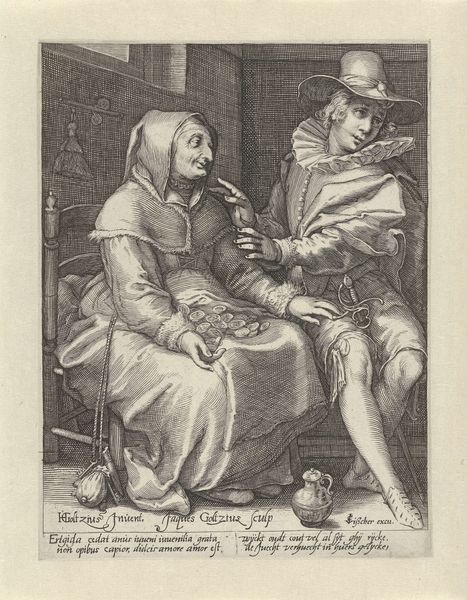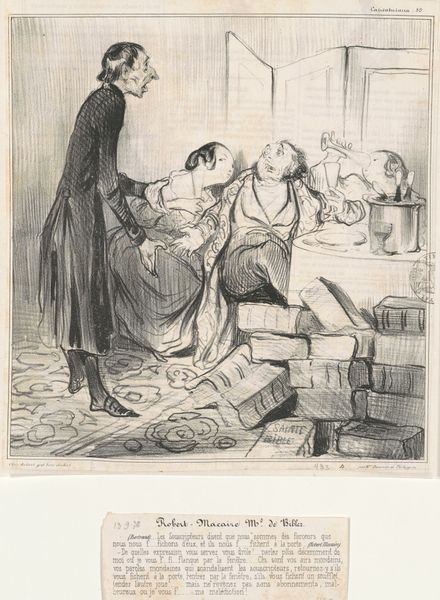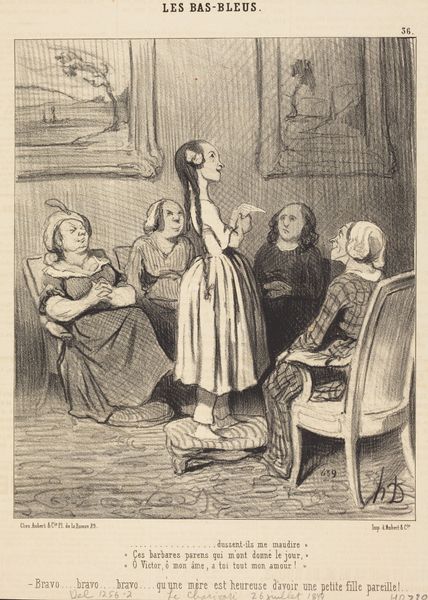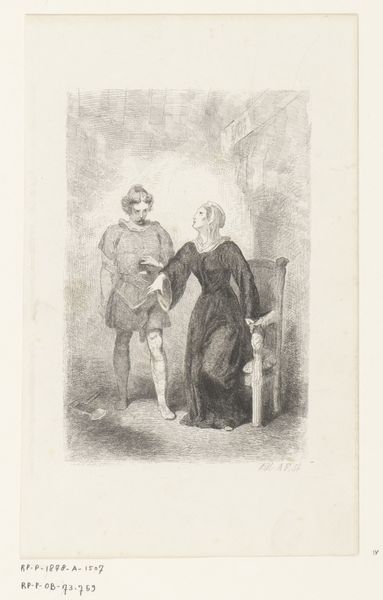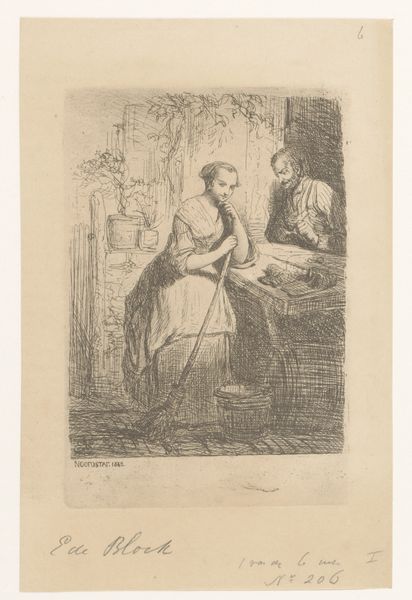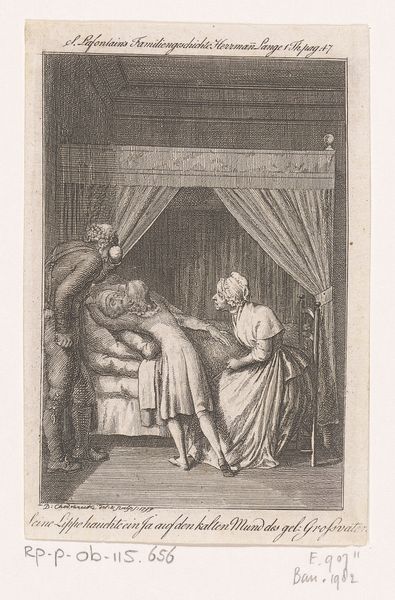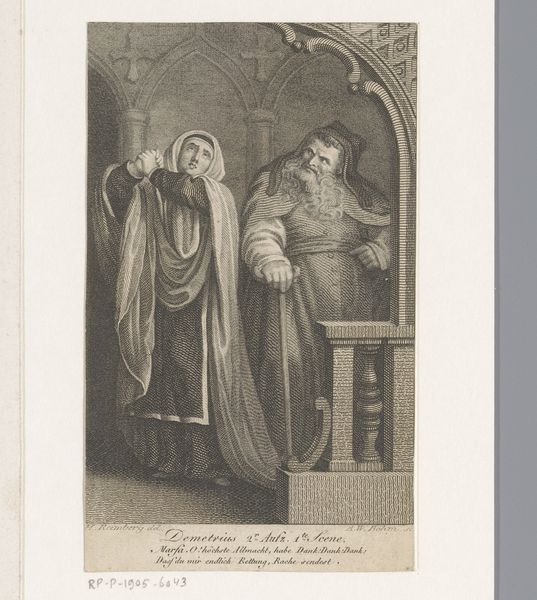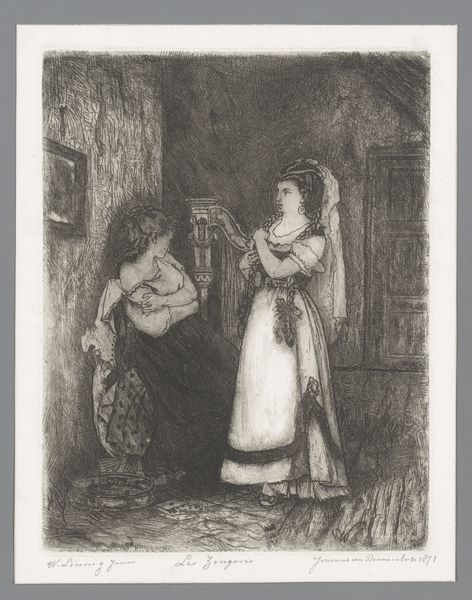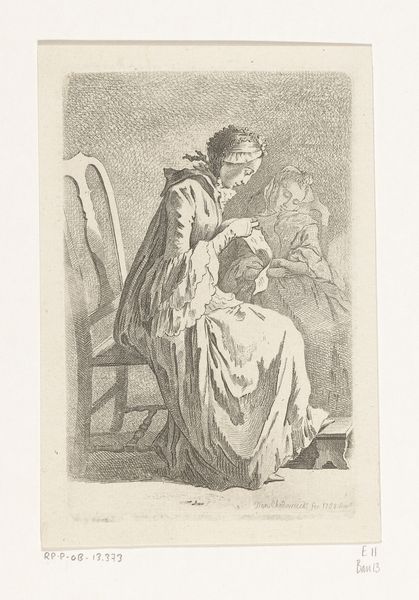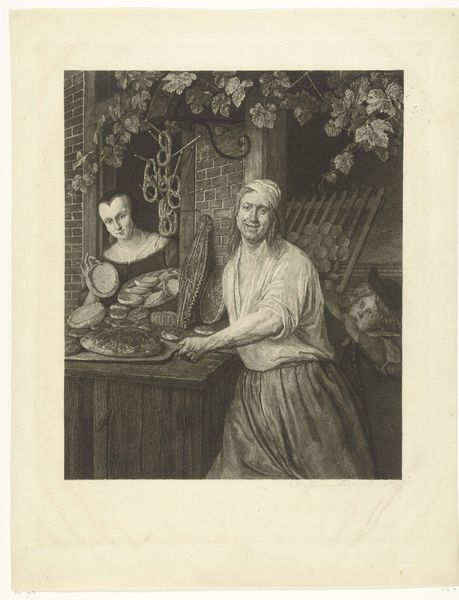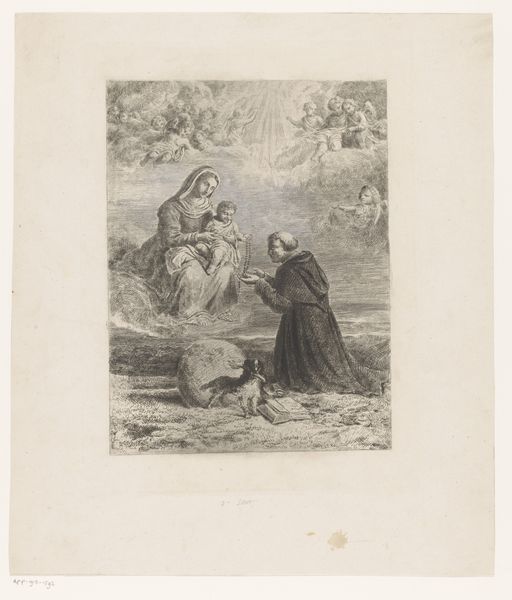
drawing, pen
#
portrait
#
pencil drawn
#
drawing
#
pencil sketch
#
old engraving style
#
caricature
#
pencil drawing
#
pen
#
portrait drawing
#
genre-painting
#
realism
Dimensions: height 180 mm, width 130 mm
Copyright: Rijks Museum: Open Domain
Curator: Ah, here we have Willem Geets' drawing "Oude vrouw wijst naar de zittende vrouw naast haar" from around 1874-1875. It’s executed in pen and pencil, with a good amount of fine detail considering the media. Editor: My first impression is how stark and almost confrontational the scene is. There's a really noticeable difference between the energy of the standing woman and the withdrawn figure of the seated one. It feels like a moment laden with unspoken words, heavy as an argument on a rainy afternoon. Curator: Precisely! Geets had a sharp eye for social dynamics and isn't afraid to depict the everyday squabbles, or perhaps deeper tensions, within communities. The pointing gesture, rendered so meticulously, becomes a focal point—almost accusatory. This piece feels very telling of his realism style. It captures an everyday encounter or “genre painting”. Editor: It is. You know, thinking about the era, I wonder about the context for images like this. Was Geets intentionally trying to offer a glimpse into the lives of women? I mean we only get two here, but still: a stark difference that says something in their time. Was it to stir empathy or simply to document what he saw? There’s definitely a kind of public theater at play. The artist holds the mirror to daily life. Curator: I suspect it was a little of both. While Geets wasn’t overtly political, his art engaged with the burgeoning interest in portraying the realities of life outside the elite circles. Remember, there's an entire artistic ecosystem evolving then—with museums beginning to cater to a broader public. Geets' art definitely has a political impact, showing realities. Editor: So, images like this are shaping how people begin to view their own societies...and possibly even their place in it! In an aesthetic and public discourse kind of way? Curator: Exactly! It’s that exchange—the viewer and art. We see a drawing like this, created nearly a century and a half ago, and those human dynamics are still palpable. Art becomes a conduit for exploring the narratives embedded in objects, institutions, and our shared culture. Editor: Beautifully put. It is funny: on the one hand, this drawing feels utterly specific to a time and place, yet on the other hand, those small moments of human friction seem so absolutely timeless. Curator: And that, I believe, is what continues to make Geets's work so resonant today. Editor: Cheers to that. I’ll never look at arguments quite the same way again.
Comments
No comments
Be the first to comment and join the conversation on the ultimate creative platform.

